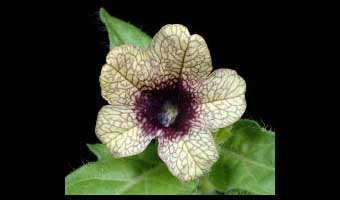
Plants that contain chemicals poisonous to humans have long cohabited with crops. They were still causing problems until fairly recently, and are still common in fields in parts of eastern Europe. Common sense decreed they had to go from fields, then best practice and modern agricultural science found the means to remove them. Most of them are rarely found in arable-grass seedbanks. They are nevertheless an interesting and useful group, many of which have medicinal properties if prepared and administered in the correct way.
- Corncockle Agrostemma githago, a poisonous contaminant of grain crops, presumed extinct in the UK as a result of rigorous seed purification methods, but reintroduced to wildflower gardens.
- Henbane Hyoscyamus niger, highly poisonous member of the potato family, now uncommon here, but still a weed in parts of eastern europe.
- Hemlock Conium maculatum, rare in fields here but still present in corners, bits of waste land and road verges.
- Thorn apple Datura stramonium, occasionally found in fields and waste land probably as an imported impurity, but turns up in the most unexpected places!
- Black nightshade Solanum nigrum, mostly rare, but uncharacteristically for rare weeds, where it occurs it does so in large numbers.
While the poisonous weeds have been depleted, many other poisonous plants remain, and even the fact they are poisonous has been lost from local knowledge.



